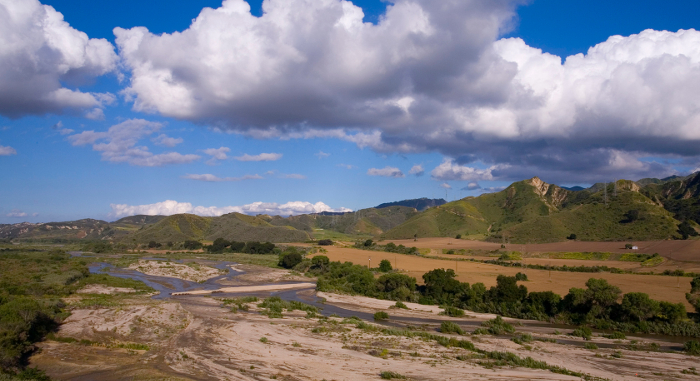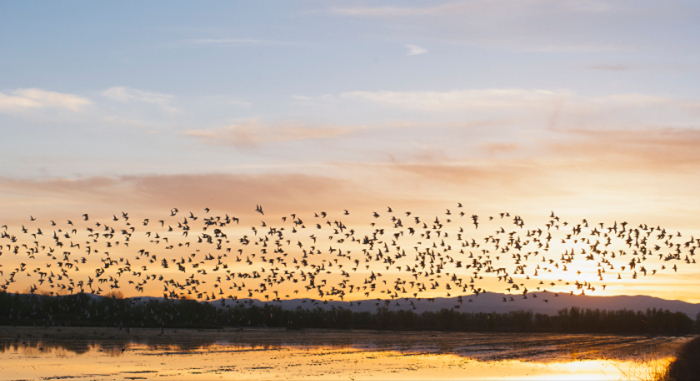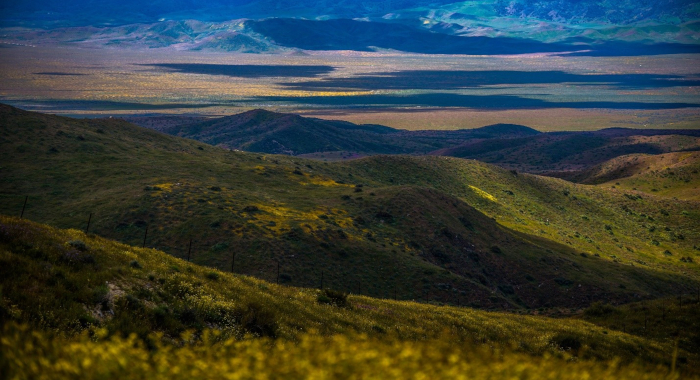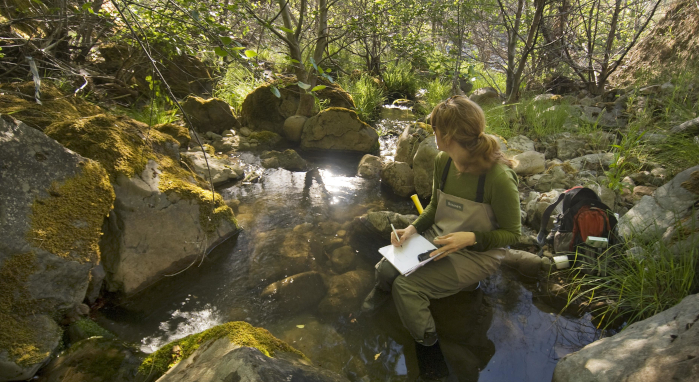California is one of the most hydrologically altered landscapes in the world. As water becomes ever more scarce and the human population continues to grow, that vast engineered system strains to meet the needs of people let alone the needs of nature.
Water rights allocations far exceed actual surface water supply, and millions of wells tap groundwater to meet the increasing demands of farms and communities. As groundwater reservoirs are depleted they can in turn reduce surface flows – exacerbating a vicious cycle in which people and nature both lose. Rivers, wetlands and groundwater-dependent ecosystems are caught in this struggle for an increasingly limited resource. Nearly half of California’s roughly 4,000 freshwater species are considered vulnerable to extinction. Of the taxa that are found nowhere but California – our endemic freshwater biodiversity – 90 percent are at risk.
But there is hope. While it is impossible to return natural flows to most of California’s rivers and streams, we can – through science, technology, and innovative market tools – endeavor to deliver water when and where nature needs it most.




Parker, Sophie, Remson, E.J, Verdone, Lily
This paper reviews how the Conservancy has maximized its return on investment on the Santa Clara River in Ventura County, California by focusing riparian restoration efforts in a few…Michelle D Staudinger, Shawn L Carter, Molly S Cross, Natalie S Dubois, J Emmett Duffy, Carolyn Enquist, Roger Griffis, Jessica J Hellmann, Joshua J Lawler, John O'Leary, Scott A Morrison, Lesley Sneddon, Bruce A Stein, Laura M Thompson, Woody Turner
This paper synthesizes research pertaining to climate change impacts on biodiversity, reviewed by the biodiversity technical working group of the 2014 National Climate Assessment. The paper focuses on…Golet G.H., D.L. Brown, M. Carlson, T. Gardali, A. Henderson, K.D. Holl, C.A. Howell, M. Holyoak, J. Hunt, G.M. Kondolf, E.W. Larsen, R.A. Luster, C. McClain, C. Nelson, S. Paine, W. Rainey, Z. Rubin, F. Shilling, J.G. Silveira, H. Swagerty, N.M. Williams, D.M. Wood
Large-scale ecosystem restoration projects seldom undergo comprehensive evaluation to determine project effectiveness. Consequently, there are missed opportunities for learning and strategy…Jeanette Howard, Kirk Klausmeyer, Kurt Fesenmyer
Californians face profound decisions regarding the management of their state’s increasingly limited water supply. Critical for decision-making is information about the plants and animals that…Golet G.H., J. Hunt, D. Koenig
Floodplains often are managed both for agriculture and as habitat for native species. On the Sacramento River, farmers have expressed concern that natural areas may be sources of pests to adjoining…Jennifer Carah, Jason Pelletier
A two-page summary of salmon restoration efforts at the Garcia River Forest on the North Cost of California focusing on the reintroduction of wood in streams as a strategy.Kirk Klausmeyer, Katie Fitzgerald
Key to protecting drinking water for all Californians is understanding the sources and health of the thier watersheds. This study maps California's surface drinking water sources, the watersheds…The Nature Conservancy, Jennifer Carah
Salmon and trout thrive in streams with cool water, low levels of sand and silt, and deep, shaded pools. Intensive forest management in California over the last 150 years led to the removal of these…Shaw, M.R., L. Pendleton, D.R. Cameron, B. Morris, D. Bachelet, K. Klausmeyer, J. MacKenzie, D.R. Conklin, G.N. Bratman, J. Lenihan, E. Haunreiter, C. Daly, P.R. Roehrdanz
As the climate warms, changes in ecosystems will impact human communities and livelihoods. This paper, together with a California Energy Commission Scenarios Report of the same name, explores the…Mary Gleason, Sarah Newkirk, Matt Merrifield, Jeanette Howard, Robin Cox, Megan Webb, Jennifer Koepcke, Brian Stranko, Bethany Taylor, Mike Beck, Roger Fuller, Dick VanderSchaaf, Jena Carter
While significant progress has been made over the past few decades in improving estuarine water quality, restoring wetland habitats, and incorporating estuarine habitats into managed areas, estuarine…Stralberg, D., D. Cameron, M. Reynolds, C. Hickey, K. Klausmeyer, S. Busby, L. Stenzel, W. Shuford, G. Page
This analysis provides the first comprehensive overview of the specific habitats used by 42 different migratory waterbird species throughout California. The authors reveal important gaps in…Howard, J, C. Revenga
Worldwide, freshwater species and habitats are, on average, more imperiled than their terrestrial or marine counterparts. Despite concerns over the health of the world’s freshwater species and…Golet G.H., T. Gardali, C. Howell, J. Hunt, R. Luster, B. Rainey, M. Roberts, H. Swagerty, N. Williams
Studies that assess the success of riparian restoration projects seldom focus on wildlife. More often, vegetation is studied, with the assumption that animal populations will recover once adequate…